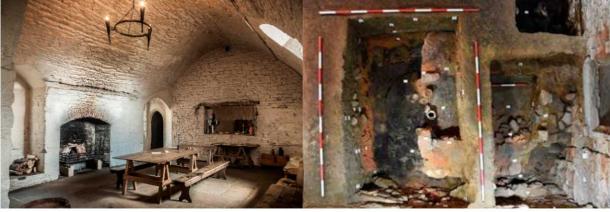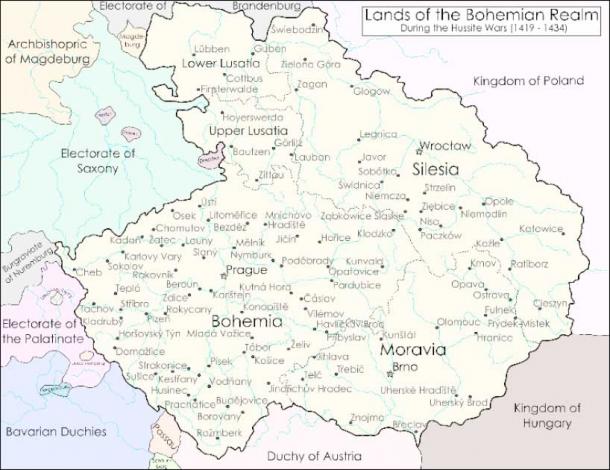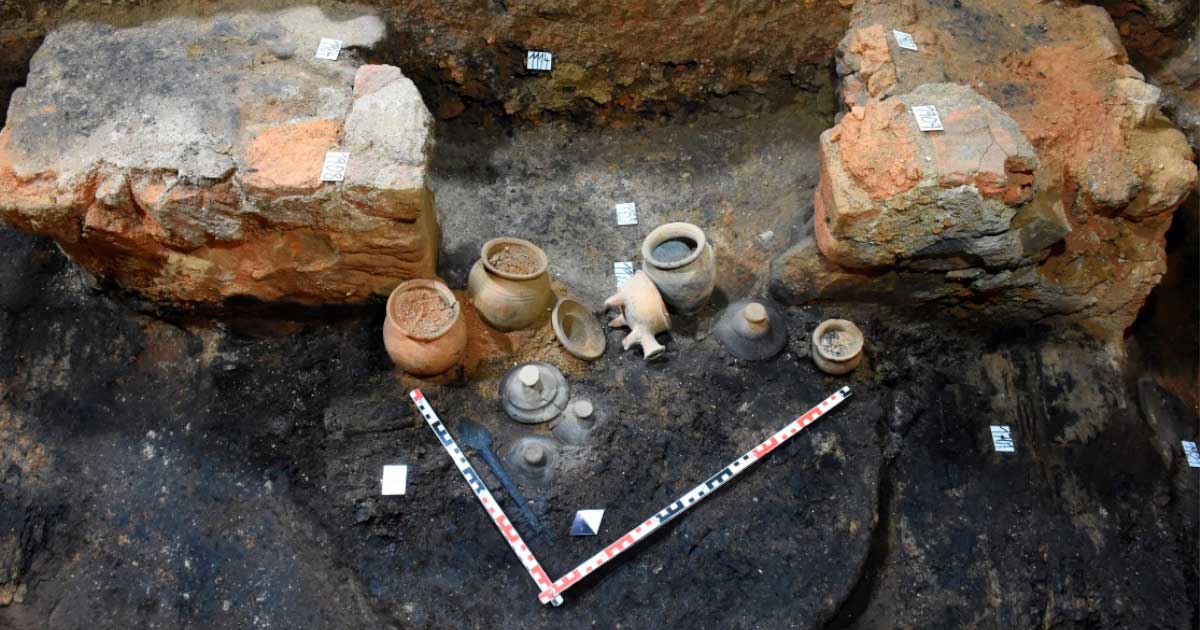Exceptionally Preserved Medieval Kitchen Excavated in Czech Republic
Archaeologists in the Czech Republic recently made an unusual and exciting discovery that dates back many centuries. While digging up a medieval house in the historic center of Nový Jičín in the country’s Moravian-Silesian region, the excavation team found an astonishingly well-preserved kitchen hidden within the lower section of the house’s ruins.
Initial estimates are that the kitchen was constructed sometime in the early 15th century. The 600-year-old room was unearthed inside a buried wooden home that was built near Nový Jičín’s historic city walls. This location is telling, because it suggests that the people who lived there were an elite family from the burgher class, a medieval aristocratic classification that referred to a wealthy and politically powerful elite.
“Since the house was located near the town walls, this would have been a less wealthy burgher family,” historian Pavel Stabrava of the Novojičín Museum told Prague Radio International. “The richest burghers would have lived in so-called ‘beer court’ houses around the town square.”

Modern Masaryk Square, Novy Jicin town, Moravia, Czech Republic (kaprikfoto / AdobeStock)
The log home was supported by a stone foundation, and its well-furnished medieval kitchen was equipped with a brick oven and a hearth. The Czech archaeologists also unearthed several intact ceramic pots that still had their original lids attached. Other items recovered included a wooden cooking spoon that was in miraculously good shape.
“This was a log house built on a stone foundation. Given the surrounding evidence, including the items that we found inside, we have been able to date it roughly to the period of the early 15th century.” As Pavel Stabrava explained, the design of the home, kitchen, and associated artifacts made it possible to date the kitchen to the early 1400s.
- The Kingdom of Bohemia: European Jewel and the Heritage of Czechs
- Suspected Human Sacrifices Unearthed Beneath Medieval Castle

Left: A typical medieval kitchen (hubb67 / Adobe Stock); Right: Overhead view of excavation (František Kolář, National Heritage Institute)
The Hussite Heresy and Hussites on the Attack
Interestingly, signs of fire were found on the walls of the excavated medieval home. This could mean the house’s inhabitants were forced to flee suddenly and leave a lot of their valuables behind, to escape a raging and life-threatening inferno. Some of the medieval kitchen’s ceramic pots were sitting on the hearth, suggesting they´d just been washed and put there to dry before the residents of the home ran out and abandoned them for good.
The archaeologists who unearthed the site believe the house and the surrounding village may have been attacked by the Hussites. They were a Protestant religious reform movement that fought against the Catholic political and religious hierarchy in Bohemia (which included the lands of Moravia and Silesia) during the fiercely contested Hussite Wars from 1419 to 1434.
“The working hypothesis is that the house was destroyed during the conquest of the city by the Hussites in 1427, when Hussite forces campaigned in Moravia and Silesia,” Stabrava stated . “Several independent historical sources mention the siege and conquest of the town, including the massacre of some of its citizens.”
The Hussites were named after their leader, religious reformer Jan Hus, who was condemned by the Catholic Council of Constance (1414–18) and burned at the stake. The efforts to suppress the rebellion of the Hussite heresy was supported by the Holy Roman emperor and the papacy, highlighting just how seriously this conflict was viewed by the medieval Catholic authority.
- Calling Medieval Foodies! Online Courses for Cooking Medieval Food
- Ancient Czech Republic’s Family Is Selling NFTs To Cover Conservation Costs

Map of the Bohemian region during the Hussite Wars (Cameron Pauley / CC BY SA 4.0)
Hidden History Revealed, One Discovery at a Time
At this time, not much is known about the medieval settlement at Nový Jičín. This is the reason why archaeologists have been active recently at this location, which is not far from the country’s eastern border with Poland.
The current theory is that the medieval version of the village was founded in the 14th century by the Lords of Kravaře, a Moravian noble family with a long history in the region. Before this, there apparently was a smaller settlement at the site, built around the castle of Starý (Old) Jičín. The castle had been erected as a defensive fortress to protect an important road that passed through the area. It seems this location may have been a center of trade or commerce, with merchants and traders moving back and forth between the Bohemian region and Poland and parts beyond.
The latest excavation at Nový (New) Jičín was sponsored in part by the Czech Republic’s National Heritage Institute, resulting in the discovery of this medieval kitchen. Its spokesperson, František Kolář, said in medieval times the town would have been comprised largely of wooden houses of various shapes and sizes. He admits, however, that this conclusion is based on a relatively small number of discoveries.
“This is because there haven’t been many archaeological excavations in the historical center of the city,” Kolář said. “This is one of the first that have been, made and we hope that we will be able to continue with excavations as the historic houses in the city get renovated.”
The artifacts recovered from the remarkably well-preserved kitchen are currently being processed to make sure they can be preserved and maintained. After this work is finished, they will be stored at the Novojičín Museum and could be put on display at a later date. In the meantime, excavations at Nový Jičín are slated to continue, in the hopes that more can be discovered about the medieval settlement that once occupied the site.
Top image: Ceramic vessels recovered from medieval burgher kitchen. Source: František Kolář / National Heritage Institute
By Nathan Falde
References
600-Year-Old Kitchen Discovered in the Czech Republic. August 11, 2022. Prague Morning. Available at: https://www.praguemorning.cz/600-year-old-kitchen-discovered-in-the-czech-republic/
McEnchroe, T. August 8, 2022. Uniquely Preserved Medieval Kitchen Unearthed North of Moravia. Radio Prague International. Available at: https://english.radio.cz/uniquely-preserved-medieval-kitchen-unearthed-north-moravia-8758128


















Comments
What if they got the dates way wrong, and there were no ‘elites’ way back then?
But confusing that they call it a kitchen and not an elite burial adorned with kitchen implements, ...you know, to take to the afterlife. Or has something changed?
Nobody gets paid to tell the truth.